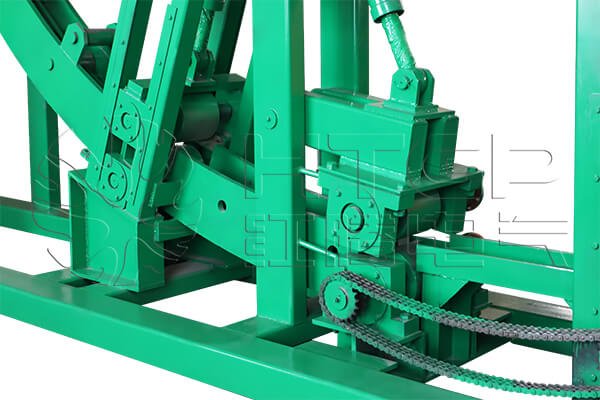Continuous casting is an intermediate link connecting steelmaking and steel rolling, an indispensable part of the metallurgical process, and an important part of the steelmaking plant. In the process of producing various steel products in steel plants, there are two methods of using molten steel to solidify and form: the traditional ingot casting method and the continuous steel casting method.

Ingot Casting and Continuous Casting Process Comparison
Ingot casting: intermittently pour a molten steel furnace into multiple steel ingots. After the molten steel solidifies, forms, and cools, we will obtain a billet. Because die casting needs to make a mold every time it is poured, cool it down, and then de-mold, it occupies a large area, the time is relatively long and the production efficiency is low.
Ingot casting has a long history, and the production ratio is decreasing year by year. However, continuous casting cannot completely replace die casting at present. For example, large-scale castings and forgings for nuclear power units, turbine rotors for hydropower, and main shafts of 10,000-ton ships can only be used for die casting.
Continuous casting: Molten steel flows into the tundish continuously, mixed and divided by the tundish, poured into the crystallizer to cool and solidify, and an infinitely long slab is obtained. The slab after cutting can be directly used for steel rolling production.
Advantages of Continuous Casting Compared to Ingot Casting
The ingot quality is high. This is because the continuous ingot cooling intensity is high and the crystallization speed is fast, so the intragranular structure is fine and the mechanical properties are high. Secondly, the crystallization of continuous ingots proceeds sequentially from bottom to top and from outside to inside, with a definite direction, and there is always a liquid cavity at the gate of the ingot, which is conducive to the feeding of metal and the precipitation of gas. In addition, during continuous casting, the metal transfer is continuous and stable, and there is no impact or tumbling. This reduces the chance of oxide film, slag formation, and being involved in the metal, and improves the purity of the metal.
High yield rate Continuous casting not only improves the quality of the ingot, and reduces the number of waste products such as pores, porosity, oxide film, inclusions, etc., but also increases the length of the ingot, and reduces the cutting head and tail, which greatly improves the metal yield.
High productivity Due to the high degree of mechanization and automation of continuous casting production, the weight of ingots is significantly increased. In addition, the working conditions during continuous casting are greatly improved, and labor consumption is reduced.
Disadvantages of Continuous Casting
The casting is subjected to strong cooling to generate large internal stress, which increases the crack tendency of some alloy large-section ingots.
The rapid crystallization of the ingot makes some refractory elements (manganese, chromium, zirconium, iron, titanium, etc.) form a solid solution with a large supersaturation degree with aluminum, and intensifies the intragranular segregation and the formation of primary crystals of intermetallic compounds. The tendency leads to the generation and aggravation of some special defects of deformed products (such as anisotropy of industrial pure aluminum sheet, regional coarse recrystallization of extruded products and die forgings, delamination caused by local segregation, etc.).
The mechanical equipment is relatively complicated and requires a large investment.